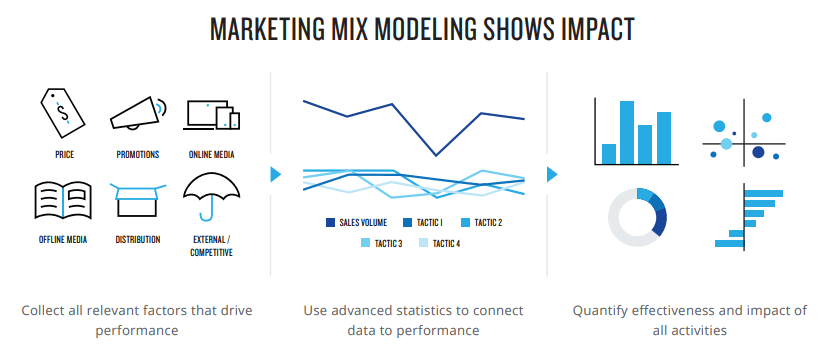9 Things Your Marketing Mix Vendor May Not Be Telling You | Nielsen
Digital Marketing
In today’s digital world, there is a common challenge for advertisers across almost all industries: how to know which marketing activities are actually driving profit and which are wasting spend.
Being a marketer, have you ever asked yourself if you are using marketing mix models and vendors in the right way?
According to Nielsen, there is one way to answer these questions, a measurement approach called marketing mix modeling.
What is Marketing Mix Modeling?
Marketing mix modeling is a way to calculate the total effect that every marketing channel and its key dimensions, such as product and geography, have on sales and other performance metrics while controlling for exogenous factors such as weather and holidays that impact business performance.
Marketing mix modeling is used to support fact-based budget allocation decisions. The insights provided by the model allow companies to divide limited resources as efficiently as possible and with the highest ROI.

The Marketing Mix Modeling
If you’re looking forward to calculating the total effect each of your marketing channels has on sales and other performance metrics—and you want to find the right marketing mix model/vendor to help—download this guide.
The Guide also includes:
- The sorts of marketing mix model you need to gain the outputs you seek—and how to ensure accuracy.
- How factors like the granularity of data inputs or deliverable type can influence the accuracy of results.
- The key 9 things you need to ask and understand about a vendor before you hire them.
What’s in the “9 Things Your Marketing Mix Vendor May Not Be Telling You” Guide:
- 9 Things Your Marketing Mix Vendor May Not Be Telling You
- Choosing the Right Vendor Can Impact Your Business Growth
- 9 Questions to Ask Your Vendor
- Accurate, Actionable Insights
Number of Pages:
- 12 Pages
Pricing:
- Free

Nielsen
Market Research & Data Technology
Warning: Undefined array key "sidebar_ads" in /home/dmc/public_html/wp-content/themes/DMC/functions/helpers.php on line 824






